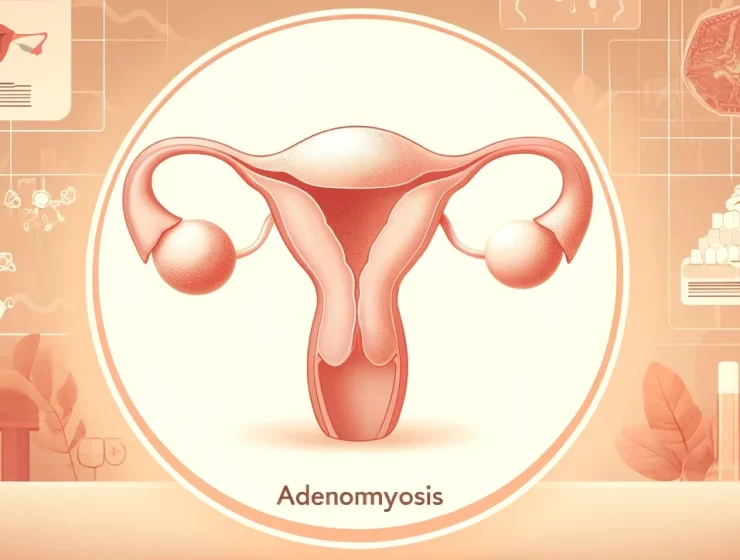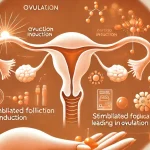What exactly are uterine polyps?
Uterine polyps are small, benign growths that can form on the inner wall of the uterus. They usually arise from the uterine lining and can be a few millimeters to a few centimeters in size. These polyps often occur in women who are approaching or have gone through menopause. Fortunately, they are usually harmless! However, they can sometimes cause discomfort, such as: irregular periods or light bleeding between menstrual periods.
Although uterine polyps are generally not dangerous, it is important to keep an eye on them. They can cause symptoms that disrupt your daily life. Symptoms may include:
-
- Prolonged menstrual periods
-
- Intermittent blood loss
-
- Pain during sex
If you notice these symptoms, it is wise to contact your obstetrician or gynecologist. They can examine you and discuss any treatments that may be needed.
| Symptom | Possible cause |
|---|---|
| Irregular menstruation | Polyp formation in the uterus |
| Intermittent bleeding | Change in hormonal balance |
How are uterine polyps detected?
If you suspect uterine polyps, there are various methods to detect them. Usuallyit starts with one internal examination by your gynecologist. During this examination, the doctor may feel abnormalities in the form of polyps. In addition, a transvaginal ultrasound executed. The doctor inserts a thin ultrasound probe into the vagina, which creates images of the uterine wall. This can help determine the size and location of the polyps.
In addition to ultrasound, there are also other methods for an accurate diagnosis. A common method is the hysteroscopy, in which a thin, lighted tube is inserted into the uterus through the vagina. This allows the doctor to directly view the inside of the uterus. Another technique is the biopsy, in which a small piece of tissue is removed from the polyp and examined under a microscope. These methods are effective and provide a detailed picture of the situation.
| Research method | Description |
|---|---|
| Internal examination | Oral or vaginal examination by the gynecologist to feel abnormalities. |
| Transvaginal ultrasound | Imaging of the uterine wall using an ultrasound probe. |
| Hysteroscopy | Direct visual inspection of the uterus with a lighted tube. |
| Biopsy | Tissue sample from the polyp for microscopic examination. |
Symptoms that you should not ignore
Uterine polyps can cause a number of symptoms that you should certainly not ignore. Although some women have no complaints at all, others experience symptoms that can affect your daily life. For example, you can suffer from irregular periods, where your period lasts much longer than normal. This can be quite annoying, especially if you have a busy schedule. Your period can also be unexpectedly heavy or much lighter than you are used to. In addition, you can even experience breakthrough bleeding, which means that you suddenly lose blood between your periods. That can cause unpleasant surprises and is certainly something you should keep an eye on.
Furthermore, uterine polyps can also cause pain or discomfort. This often occurs during sexual intercourse, but you can also suffer from a constant nagging feeling in your lower abdomen. If you notice that you often suffer from abdominal pain without a clear cause, it is advisable to discuss this with your midwife. In rare cases, the polyps can even lead to fertility problems. Although this may sound scary, it is important to know that most uterine polyps are benign. Below you will find an overview of some common symptoms:
-
- Irregular periods
-
- Breakthrough bleeding
-
- Heavy or light periods
-
- Pain during sexual intercourse
-
- Chronic lower abdominal pain
A quick overview:
| Symptom | Description |
|---|---|
| Irregular menstruation | Menstruation that lasts longer than normal or starts unexpectedly |
| Breakthrough bleeding | Bleeding that occurs between normal menstrual periods |
| Pain during sex | Pain or discomfort during intercourse |
Treatments: What Are Your Options?
When it comes to treating uterine polyps, you have different options, depending on your situation and symptoms. Important factors may include your age, your general health and your personal preferences. The most common treatments are:
-
- Wait: This is often an option if you have no symptoms and the polyp is small. Sometimes polyps disappear on their own without the need for further intervention.
-
- Medication: Hormone therapy or other medications can help reduce symptoms and shrink polyps. However, this does not always treat the underlying cause.
-
- Surgical procedure: Hysteroscopy is a common procedure in which the polyp is removed through the vagina. This is usually done on an outpatient basis and is relatively simple.
-
- Biopsy: Sometimes a gynecologist may decide to take a biopsy to examine the tissue. This is done to rule out the possibility that there are malignant cells.
| Treatment option | Advantages | Cons |
|---|---|---|
| wait | – Non invasive – No recovery time |
– It may get worse – Symptoms may persist |
| Medication | – Symptomatic relief – Non-invasive |
– Side effects of medications – Not always effective |
| Surgical procedure | – Permanent solution – Relatively simple procedure |
– Recovery time required – Can be uncomfortable |
| Biopsy | – Careful diagnosis – Prevention of malignancy |
– Invasive – Possible inconveniences |
When should you really worry?
Do you suffer from unusual bleeding between your periods or after menopause? These are signs that you may need to pay attention to your health. Although uterine polyps are usually harmless, they can sometimes cause problems, such as infertility or an increased risk of uterine cancer. If you experience these symptoms, it is important to make an appointment with your obstetrician or gynecologist for a thorough check-up.
Here are some symptoms you should be alert to:
-
- Heavy periods: If you lose a lot of blood every month, this is an indication that something may be wrong.
-
- Intermittent bleeding: If bleeding occurs outside your normal menstrual cycle, pay close attention.
-
- Pain during sex: If you feel pain or discomfort, even earlier during sexual interactions, consult your doctor.
| Symptom | Possible consequences |
|---|---|
| Heavy periods | Anemia, iron deficiency |
| Intermittent bleeding | Infertility, infections |
| Pain during sex | Reduction of sexual interest, relationship problems |
Resume
And there you have it, everything you need to know about uterine polyps! We hope this article has given you some more insight into what uterine polyps are and whether you should be concerned. As you have read, uterine polyps are usually benign and are often not a cause for great concern. But of course, if you have complaints or the feeling that something is wrong, it is always a good idea to have a check-up.
Until next time and stay healthy!







